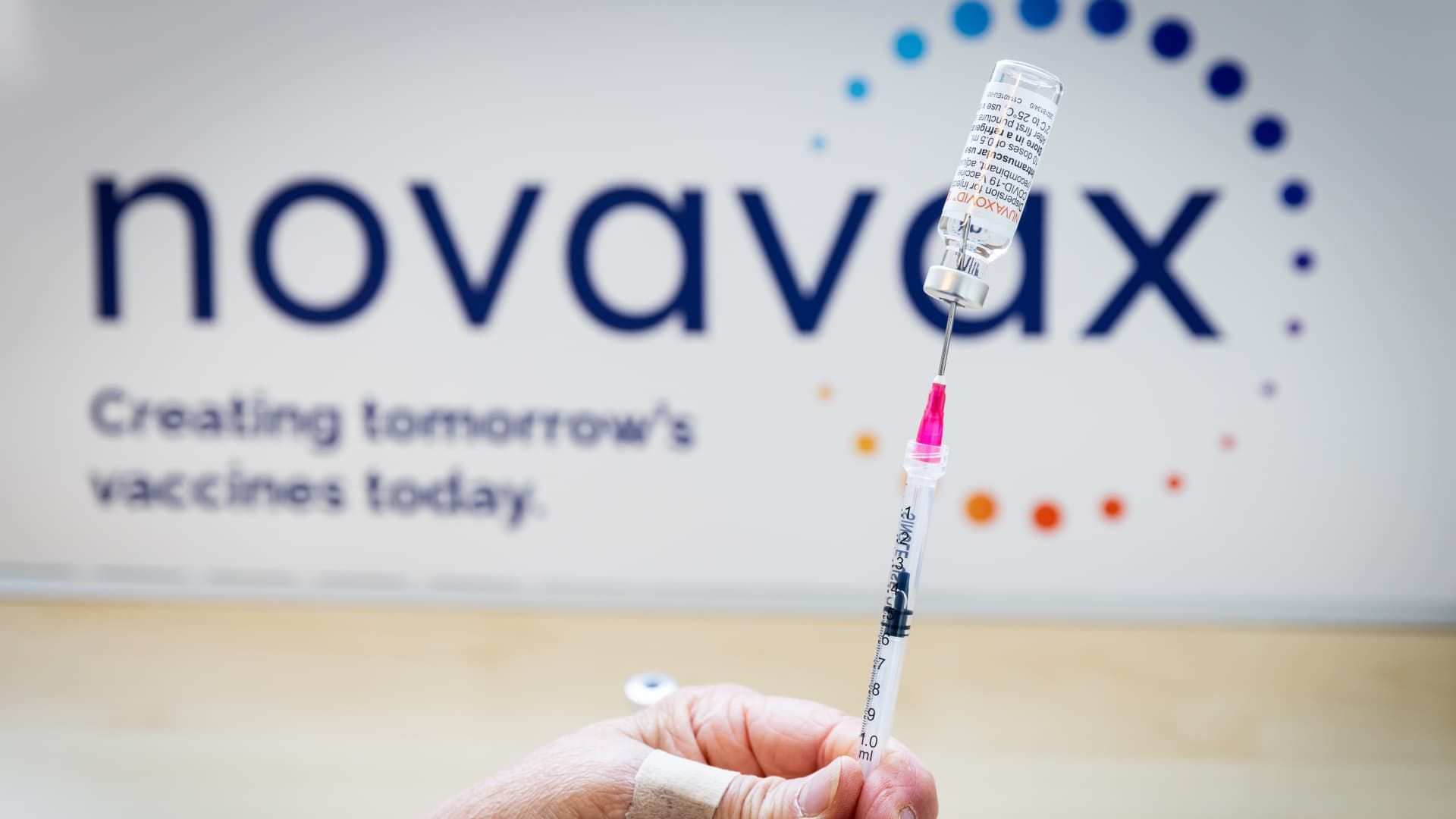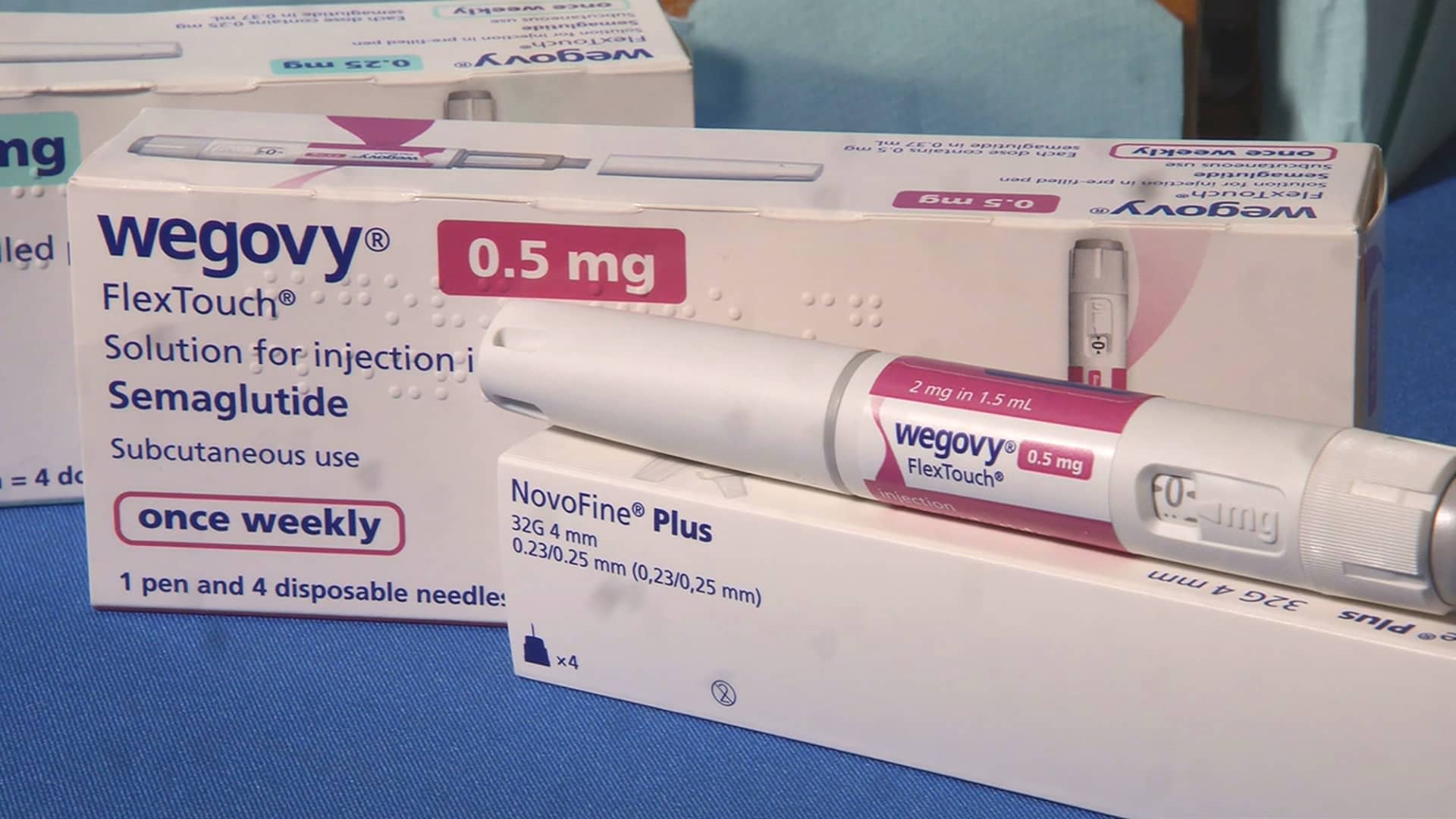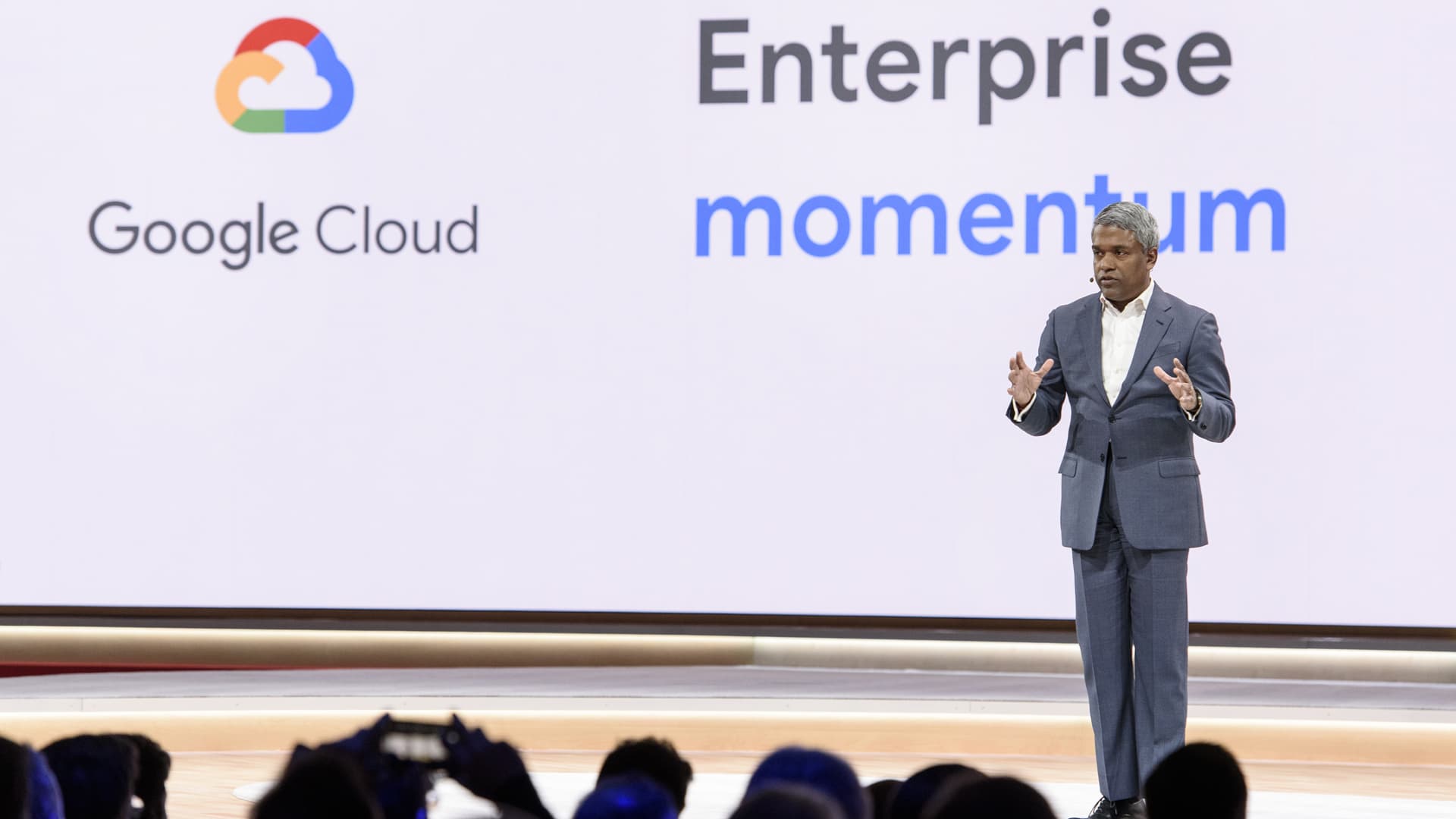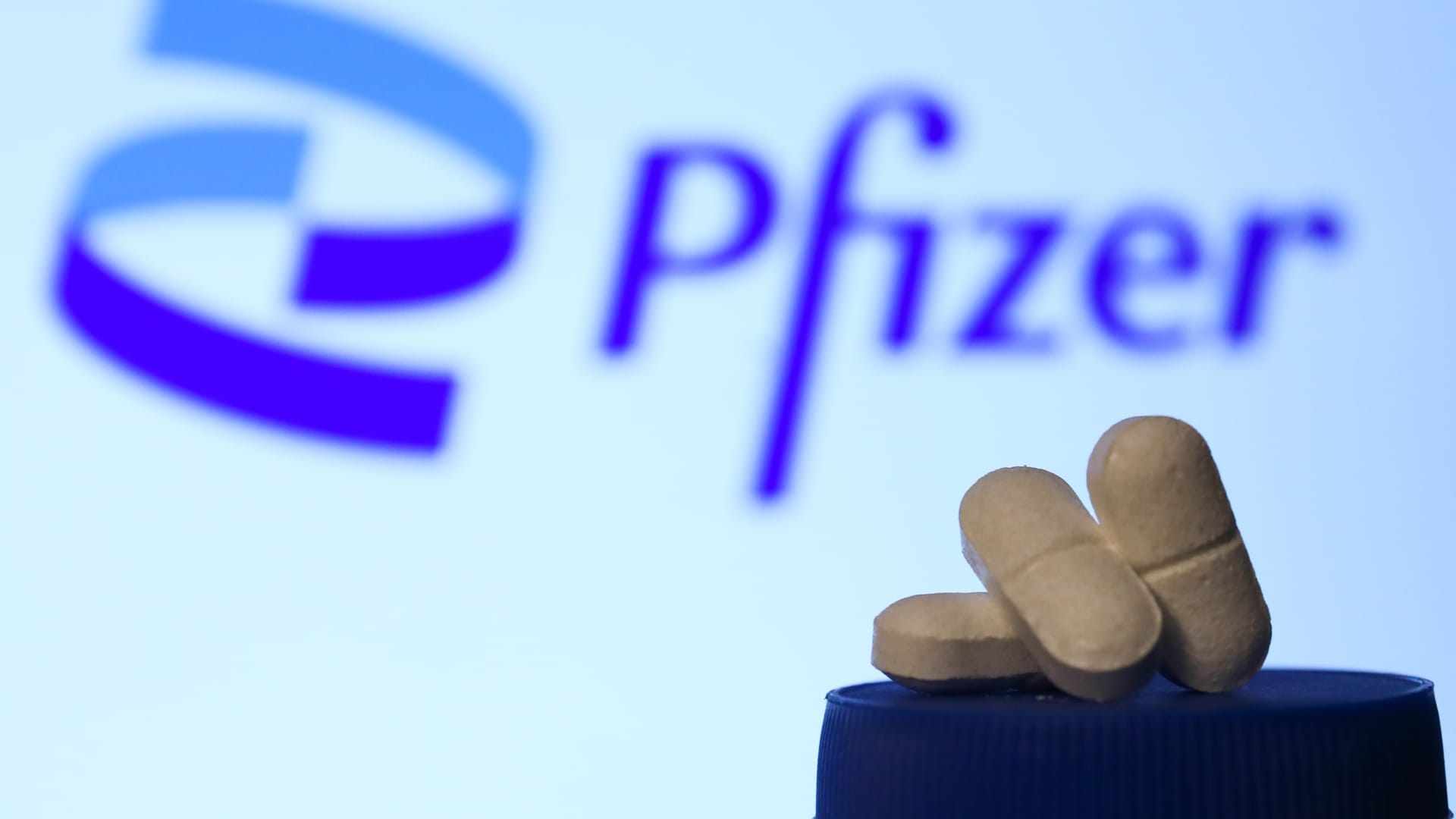A health worker prepares a dose of the Novavax vaccine as the Dutch Health Service organization begins with the Novavax vaccination program on March 21, 2022 in The Hague, Netherlands.
Patrick Van Katwijk | Getty images
A version of this article appeared for the first time in the Healthy Bulletin returns from CNBC, which brings the latest medical care news directly to its entrance tray. Subscribe here To receive future editions.
Novávax Finally you can breathe a relief sigh, at least one small.
The food and medication administration approved the company COVID-19 vaccine after more than a month late, but the long-awaited green light comes with unusual restrictions.
The decision limits the use of the shot, Nuvraxovid, to people over 65 and those aged 12 to 64 who have at least an underlying medical condition that puts them at high risk of serious illness if they hire Covid.
These new restrictions seem to reflect the high degree of skepticism, the Secretary of Health and Human Services, Robert F. Kennedy Jr., and other leaders that he has designated in all federal health agencies about vaccines. In particular, food and medication administration is scheduled to describe its approach to Covid vaccination in a virtual event on Tuesday, which could mean important changes in what is required to obtain the regulatory approval of the shooting.
Novavax's taking is now fully approved in the US. Uu. Since 2022, the vaccine has been used under an emergency use authorization. Health experts consider it a valuable alternative to the shooting of messaging RNA from Pfizer and Modernthat have been much more popular among Americans.
The covid soaps of these companies are already fully approved for use in any person older and authorized for use in children up to 6 months.
But the three companies must obtain additional approval to update the tension led by their respective shots before the autumn and winter vaccination season. FDA vaccine advisors are ready to discuss tension selection at a meeting at the end of this week.
And next month, the advisors of the Centers for Disease Control and Prevention will discuss whether COVID Vaccines annually must still be recommended for all or only for certain people with greater risk.
Novavax, however, has even more work to do in advance than its rivals.
FDA approval requires that the company complete several studies on whether its vaccine is also associated with several heart conditions, such as myocarditis or inflammation of heart muscle. (Cases of myocarditis among people who have received COVID shots are rare and are mainly reported in adolescents).
Some of the required investigations can be completed with the available data. But a new study would probably require Novavax to follow thousands of healthy people who are 50 to 65 years old who take the vaccine or a placebo.
Despite the so-called “post-commercialization” requirements, some analysts said that approval remains a victory for Novavax.
The company now hopes to be ready for the commercial delivery of the vaccine in the United States this fall in association with Sanofi of France. The two companies last year signed a license agreement of up to $ 1.2 billion.
Analysts said the association could boost Novavax's possibilities to gain more Covid vaccines participation. Sanofi is a “powerful partner” with “solid distribution channels and vaccine experience,” said Jefferies analysts in a note on Sunday.
The complete approval has also caused a payment per milestone of $ 175 million to Novavax de Sanofi as part of its agreement, which is a significant sum for the small vaccine manufacturer.
The closest approval of Novavax's taking may not be totally bad news, Jefferies analysts added. They said that people over 65 represent the largest age group for COVID vaccination anyway.
We will have to wait and see how changes in federal health agencies impact the deployment of Novavax taking at the end of this year, so be attentive for our coverage!
Do not hesitate to send any advice, suggestion, stories ideas and data to Annika in [email protected].
The latest in medical care technology: virtual solutions for depression and anxiety are effective, but can increase costs, says the report.
Patients suffering from light to moderate depression and anxiety can significantly improve their symptoms through the use of virtual tools for mental health care, according to a new report from the Peterson Health Technology Institute (PHTI) on Tuesday. However, some of these tools increase the total medical care costs for employers and plans.
Depression and anxiety affect more than one in five adults in the US. In 2020, the United States spent more than $ 240 billion in treatment only for these two disorders. Virtual mental health tools have become increasingly popular in recent years, and PHTI evaluated a range of self -guided solutions, prescription digital therapies and combined care solutions for its report on Tuesday.
PHTI is a non -profit organization that performs independent evaluations of digital health solutions. For its latest report, the organization evaluated 15 different mental health care tools of a variety of companies, including Teladoc Health, Headspace and Spring Health.
“As a medical care system, we must defend the success of these virtual solutions to improve access and results, and we must be diligent in supporting reflective growth, financially sustainable and clinically appropriate of these solutions for the people who need them,” said Caroline Pearson, executive director of PHTI, in a letter.
Autuated solutions offer digital content such as lessons and activities that patients can access and customize to meet their individual needs. PHTI discovered that these tools offer “clinically significant improvements” for patients with depression and anxiety who still do not receive psychotherapy. These tools also decrease the net health expense for commercial payers, according to the report.
Digital therapies prescribed are software -based tools that have been authorized by the United States Food and Medicines Administration and should be prescribed to patients. When used in addition to habitual care, these tools can help patients with depression and anxiety significantly improve their symptoms, said Phti.
The organization discovered that prescribed digital therapy decreased net health spending for commercial payers, as well as medicate at anticipated reimbursement rates.
Combined care solutions combine self -guided content with virtual care equipment and licensed psychiatrists. These tools constitute most of the market, and are popular among employers buyers. These tools offer “strong clinical effectiveness,” said Phti, although there are more limited comparative data in this category.
Despite these great clinical improvements, combined care solutions increase net health spending for payers, said Phti. Savings do not compensate for costs, and the estimated spending would be greater if the solutions were implemented in Medicare or Medicaid.
“Most of these solutions currently charge access rates for all employees, not only for those who are registered to use the solution,” Pearson said. “As a result, although these solutions offer strong clinical benefits, the medical care costs of users cannot compensate for the general prices charged by the product.”
Read the full report here.
Do not hesitate to send any advice, suggestion, stories ideas and data to Ashley at [email protected].












